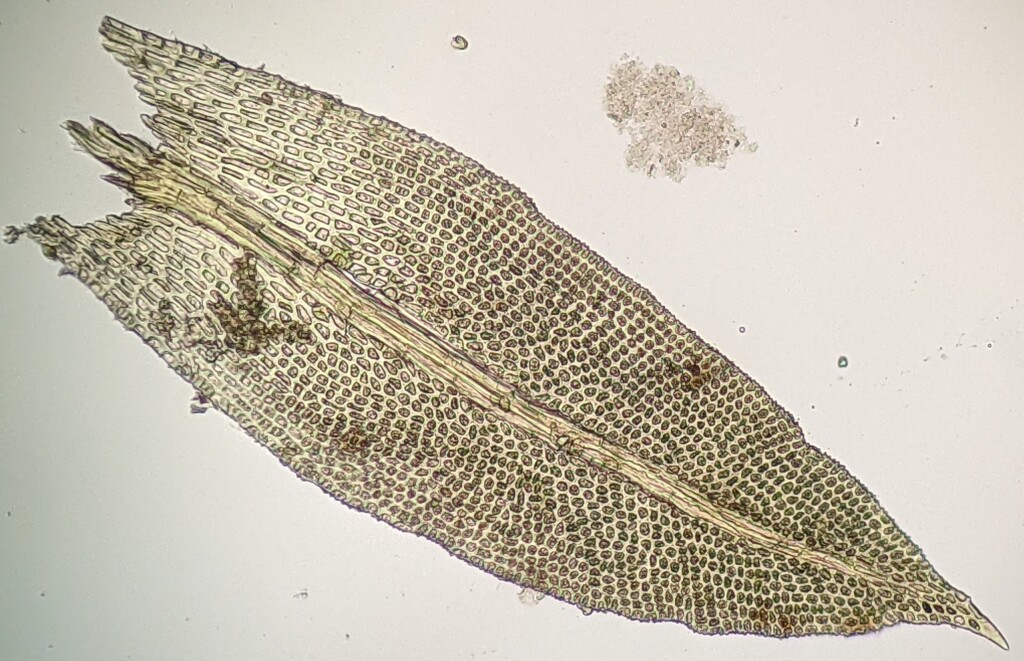Zygodon hookeri
HampeSynoicous. Asexual reproduction by clavate, 3-celled gemmae on stems and leaf axils. Loose tufts or mats on trees and occasionally rocks, 10–30 mm tall, green of yellowish green. Stems branched, yellow, densely tomentose with red-brown rhizoids throughout, not concealed by leaves. Leaves spreading or somewhat recurved when moist, crisped, flexuose and loosely curled around stem when dry, lanceolate or linear-lanceolate, 1.1–3 mm long, 0.3–0.5 mm wide, undulate; apex acute; base slightly decurrent; costa ending below apex or rarely percurrent and broadened at apex; margin ±undulate, often dentate, with teeth formed by whole cells, without a border; laminal cells in apical half rounded-hexagonal, isodiametric, 6–15 μm long, 4.5–15 μm wide, with 3–6 papillae per cell; basal laminal cells rectangular, 15–95 μm long, 5–13 μm wide, hyaline, smooth, gradually transitioning to shorter papillose cells close to base. Perichaetial leaves ovate-lanceolate, with acuminate apices. Setae 5–15 mm long, yellow, smooth, twisted anticlockwise. Capsules erect, oblong or cylindric, 1.4–2 mm long, straight, yellow or light brown, with 8 deep ribs along length when dry. Peristome single; endostome segments 8, rarely 16. Operculum oblique-rostrate from conic base, 0.6–0.7 mm long. Spores 20–25 μm diam.
GGr, HSF, HNF, MonT, HFE, VAlp. New Zealand. In Victoria recorded from wet sclerophyll forest and rainforest in the Yarra Ranges and Errinundra Plateau area of East Gippsland, and from low heath and woodland on Mount William and Thackery of the Grampians.
 Spinning
SpinningLewinsky-Haapasaari, J.; Ramsay, H.P. (2006). Zygodon, in McCarthy, P.M. (ed.), Flora of Australia 51, pp. 237–244. ABRS and CSIRO, Canberra and Melbourne.


